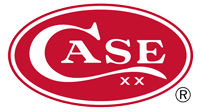
A match is a tool for starting a fire. Typically, matches are made of small wooden sticks or stiff paper. One end is coated with a material that can be ignited by friction generated by striking the match against a suitable surface. Wooden matches are packaged in matchboxes, and paper matches are partially cut into rows and stapled into matchbooks. The coated end of a match, known as the match "head", consists of a bead of active ingredients and binder, often colored for easier inspection. There are two main types of matches: safety matches, which can be struck only against a specially prepared surface, and strike-anywhere matches, for which any suitably frictional surface can be used.

Palm, Inc. was an American company that specialized in manufacturing personal digital assistants (PDAs) and developing software. They were the designer of the PalmPilot, the first PDA successfully marketed worldwide, and were known for the Treo 600, one of the earlier successful smartphones. Palm developed the Palm OS software for PDAs and smartphones, which were released under its line of Palm-branded devices and also licensed to other PDA manufacturers.

Pez is the brand name of an Austrian candy and associated manual candy dispensers. The candy is a pressed, dry, straight-edged, curved-corner block 15 mm long, 8 mm wide and 5 mm high, with each Pez dispenser holding 12 candy pieces.

Play-Doh is a modeling compound for young children to make arts and crafts projects. The product was first manufactured in Cincinnati, Ohio, United States, as a wallpaper cleaner in the 1930s. Play-Doh was then reworked and marketed to Cincinnati schools in the mid-1950s. Play-Doh was demonstrated at an educational convention in 1956 and prominent department stores opened retail accounts.

A lighter is a portable device which creates a controlled flame, and can be used to ignite a variety of flammable items, such as cigarettes, butane gas, fireworks, candles or campfires. A lighter typically consists of a metal or plastic container filled with a flammable liquid, a compressed flammable gas and in rarer cases a flammable solid i.e. rope in a trench lighter, a means of ignition to produce the flame, and some provision for extinguishing the flame or merely controlling it to such a degree that the user may extinguish it with their breath. Alternatively, a lighter can be one which uses electricity to create an electric arc utilizing the created plasma as the source of ignition or a heating element can be used in a similar vein to heat the target to its ignition temperatures, as first formally utilized by Friedrich Wilhelm Schindler to light cigars and now more commonly seen incorporated into the automobile auxiliary power outlet to ignite the target material. Different lighter fuels have different characteristics which is the main influence behind the creation and purchasing of a variety of lighter types.

Patent leather is a type of coated leather that has a high-gloss finish.

A Zippo lighter is a reusable metal lighter produced by Zippo Manufacturing Company of Bradford, Pennsylvania, United States. Thousands of different styles and designs have been made in the nine decades since their introduction, including military versions for specific regiments. Zippo lighters have been sold around the world and have been described as "a legendary and distinct symbol of America." In 2012, the company produced the 500-millionth unit. Since the company's inception, Zippo lighters have been primarily manufactured in the United States, although the company ran an operation from 1949 until 2002 in Niagara Falls, Ontario, Canada.

AGCO Corporation is an American agricultural machinery manufacturer headquartered in Duluth, Georgia, United States. It was founded in 1990. AGCO designs, produces and sells tractors, combines, foragers, hay tools, self-propelled sprayers, smart farming technologies, seeding equipment, and tillage equipment.

A Mason jar, also known as a canning jar or fruit jar, is a glass jar used in home canning to preserve food. It was named after American tinsmith John Landis Mason, who patented it in 1858. The jar's mouth has a screw thread on its outer perimeter to accept a metal ring or "band". The band, when screwed down, presses a separate stamped steel disc-shaped lid against the jar's rim.

Ball Corporation is an American company headquartered in Westminster, Colorado. It is best known for its early production of glass jars, lids, and related products used for home canning. Since its founding in Buffalo, New York, in 1880, when it was known as the Wooden Jacket Can Company, the Ball company has expanded and diversified into other business ventures, including aerospace technology. It eventually became the world's largest manufacturer of recyclable metal beverage and food containers.

Enoch Bolles was an American painter of pin-up art. He was among the earliest and most widely circulated glamour illustrators. While known today solely as a pinup artist, Bolles was a versatile illustrator who also worked extensively in the advertising industry, creating hundreds of attractive color illustrations for products ranging from bread to cigarettes. His most widely reproduced advertising illustration is the "Windy Girl" for Zippo lighters. This work, produced in 1937, has recently been reissued as the Vargas Windy Girl and has appeared in well over 100 variations on Zippo lighters.

Glass milk bottles are glass bottles used for milk. They are reusable and returnable - used mainly for doorstep delivery of fresh milk by milkmen. Once customers have finished the milk, empty bottles are expected to be rinsed and left on the doorstep for collection, or rinsed bottles may be returned to a participating retail store. Bottle sizes vary depending on region, but common sizes include pint, quart or litre.
Albright and Wilson was founded in 1856 as a United Kingdom manufacturer of potassium chlorate and white phosphorus for the match industry. For much of its first 100 years of existence, phosphorus-derived chemicals formed the majority of its products.

W.R. Case & Sons Cutlery Company is an American manufacturer of traditional pocket knives, fixed blades/sporting knives, kitchen knives, limited edition commemoratives and collectibles. The company originated in Little Valley, New York, around the turn of the 20th century, before relocating to its current home, Bradford, Pennsylvania, in 1905. The company's namesake, William Russell Case, first made knives with his brothers under the name Case Brothers Cutlery Company. His son, John Russell ("Russ") Case, worked as a salesman for his father's company before founding W.R. Case & Sons.
Imperial Schrade Corp. was an American knife manufacturer of hunting knives, pocketknives, utility knives, and bayonets during the 20th and early 21st centuries. The consolidation of five forerunner companies, including its namesakes, the Imperial Knife Company, founded 1916, and the Schrade Cutlery Company, founded in 1904, Imperial Schrade manufactured its products in the United States and Ireland and sold through hardware stores, department stores, and on military bases. The original company's fortunes declined and in 2004 it entered into bankruptcy where all equipment and intellectual property was sold off to reimburse creditors. The name and intellectual property was bought by Taylor Brands and used for marketing purposes.

Louis Vincent Aronson, inventor and businessman, founded The Art Metal Works, which evolved to manufacture the Ronson lighters.

Xylem Inc. is a large American water technology provider, in public utility, residential, commercial, agricultural and industrial settings. The company does business in more than 150 countries. Launched in 2011 as the spinoff of the water-related businesses of ITT Corporation, Xylem is headquartered in Washington, DC, with 2018 revenues of $5.2 billion and 17,000 employees worldwide.

This is an alphabetized glossary of terms pertaining to lighting fires, along with their definitions. Firelighting is the process of starting a fire artificially. Fire was an essential tool in early human cultural development. The ignition of any fire, whether natural or artificial, requires completing the fire triangle, usually by initiating the combustion of a suitably flammable material.
Charles Louis Cammann Gifford was an American attorney and politician who served in the New Jersey General Assembly and the New Jersey Senate. Gifford was President of the Senate in 1860.




















